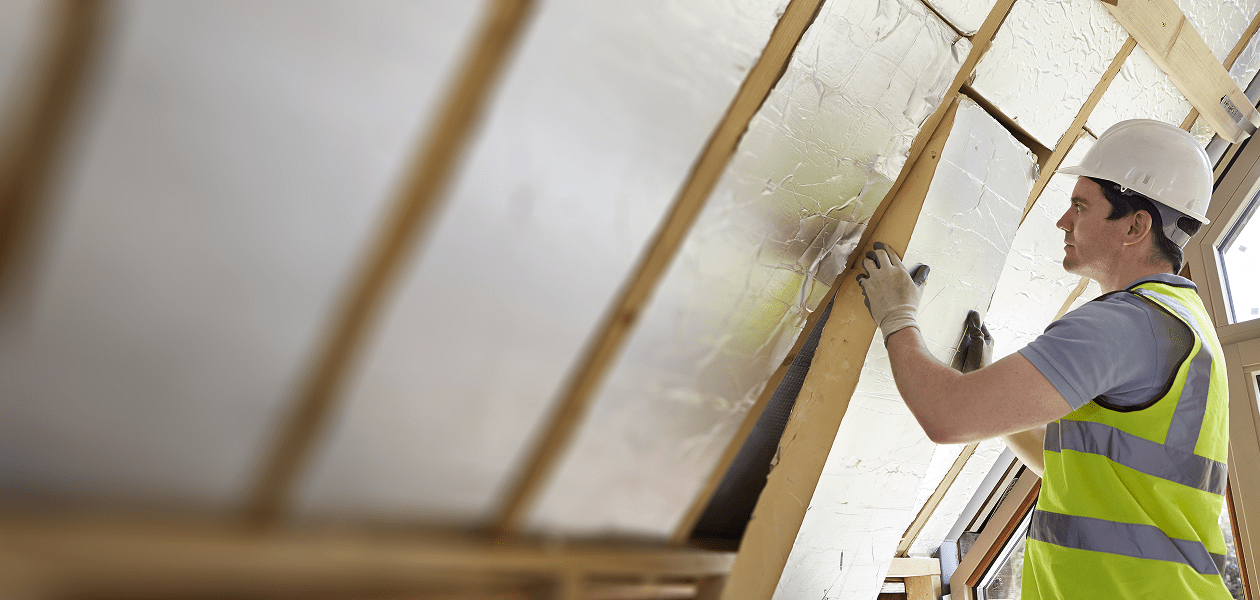Soundproofing is about controlling unwanted noise, with various materials available to mitigate sound, whether from noisy neighbours or between internal rooms in your home or building.
At Insulation UK, we supply a range of soundproofing materials designed to tackle noise problems effectively. Our range covers everything from mineral wool insulation to specialist acoustic membranes, helping you achieve the acoustic performance you need.
Understanding How Sound Travels
Sound travels in two main ways: through the air (airborne noise) and through structures (impact noise). Effective soundproofing requires different approaches for each type, which is why acoustic materials fall into distinct categories: sound absorbing, sound insulation, sound dampening and decoupling. Choosing the right combination depends on your specific noise issues and the construction of your space.
Acoustic Mineral Wool Insulation
The foundation of most effective soundproofing systems is high-performance mineral wool insulation. We stock acoustic insulation from leading manufacturers including Rockwool, Knauf, Isover and Superglass. These specialist batts are designed to fit between wall studs, ceiling joists or floor spaces, filling the cavities where sound would otherwise travel freely.
Mineral wool's dense and fibrous structure excels at absorbing sound energy and blocking noise transmission between rooms. Available in various thicknesses from 50mm to 100mm and beyond, acoustic mineral wool also provides excellent thermal insulation, making it a dual-purpose solution for walls, floors, and ceilings.
Acoustic Plasterboard
For walls and ceilings, acoustic plasterboard provides enhanced sound reduction compared to standard plasterboard. Featuring increased mass and improved damping properties, these boards are essential when building new partition walls or upgrading existing ones to meet sound insulation requirements.
Knauf and other manufacturers supply acoustic plasterboards that can be used as part of a complete soundproofing system, often combined with mineral wool insulation and resilient fixings to achieve impressive noise reduction figures.
Advanced Acoustic Membranes
When space is limited or you need to add soundproofing to existing structures, high-performance acoustic membranes offer an effective solution. Our Tecsound range includes specialist products designed for different applications:
Tecsound SY50, SY70, and S100 - Self-adhesive acoustic membranes that add mass to walls, floors and ceilings without taking up significant space. The higher the number, the greater the mass and sound-blocking performance.
Tecsound 50, 70, and 100 - Non-adhesive versions offering the same excellent performance, ideal for larger installations where adhesive backing isn't required.
Tecsound FT55 AL - An acoustic pipe wrap designed to reduce noise from plumbing and pipework, combining acoustic performance with an aluminium reinforced finish.
These flexible membranes are particularly effective for retrofit projects and situations where traditional thick insulation isn't practical.
Mass Loaded Vinyl (MLV)
Our Mass Loaded Vinyl range provides a versatile sound barrier solution for numerous applications. Available in three densities:
- 5kg MLV (2mm thickness) - Suitable for general soundproofing applications
- 7.5kg MLV (3mm thickness) - Enhanced performance for demanding situations
- 10kg MLV (4mm thickness) - Maximum sound blocking in a flexible membrane
MLV works by adding significant mass that sound waves struggle to penetrate, whilst remaining thin and flexible enough to fit in tight spaces. It's ideal for walls, ceilings, floors and even automotive or machinery applications where noise control is essential.
Pliteq® High-Performance Systems
For projects requiring certified acoustic performance, our Pliteq® range offers engineered solutions with proven results:
GenieMat® RST Series - Impact noise reduction rolls for floors, available in 2mm, 3mm, 5mm, and 10mm thicknesses. These specialist underlayments dramatically reduce footfall and impact noise transmission through floors.
GenieMat® FF Series - Floating floor systems in 3mm, 5mm, 10mm, 17mm, and 25mm thicknesses, suitable for both underscreed applications and beneath finished flooring. These create a decoupled floor that prevents vibrations from transmitting through the structure.
GenieClip® RST and Furring Channels - Professional-grade resilient fixings and channels that decouple plasterboard from walls and ceilings. This separation prevents sound from bypassing your insulation by travelling through the structural frame.
PMI Perimeter Strips - Essential for preventing acoustic flanking around the edges of soundproofed floors and walls.
Acoustic Accessories
Successful soundproofing requires attention to detail. Our range of acoustic accessories includes acoustic sealant from Bond It, designed to seal gaps and joints that could otherwise allow sound to leak through. Proper sealing is crucial - even small gaps can significantly reduce the effectiveness of your soundproofing installation.
Acoustic Foams
For spaces where echo and reverberation are the primary concern, such as home studios, offices or media rooms, acoustic foams absorb sound within a room rather than blocking transmission between spaces. These complement structural soundproofing by improving the acoustic quality of the space itself.
Every soundproofing project is unique, with specific requirements based on the construction type, the nature of the noise problem and the performance level needed. Our technical team has extensive experience helping customers select the right combination of products for their situations. Whether you're a professional contractor working to strict acoustic specifications or a homeowner tackling a noisy neighbour problem, we're here to provide expert advice and supply the quality materials you need for effective, lasting noise control.
For guidance on which soundproofing materials best suit your project, contact our team or browse our full soundproofing collection to explore the options available.




